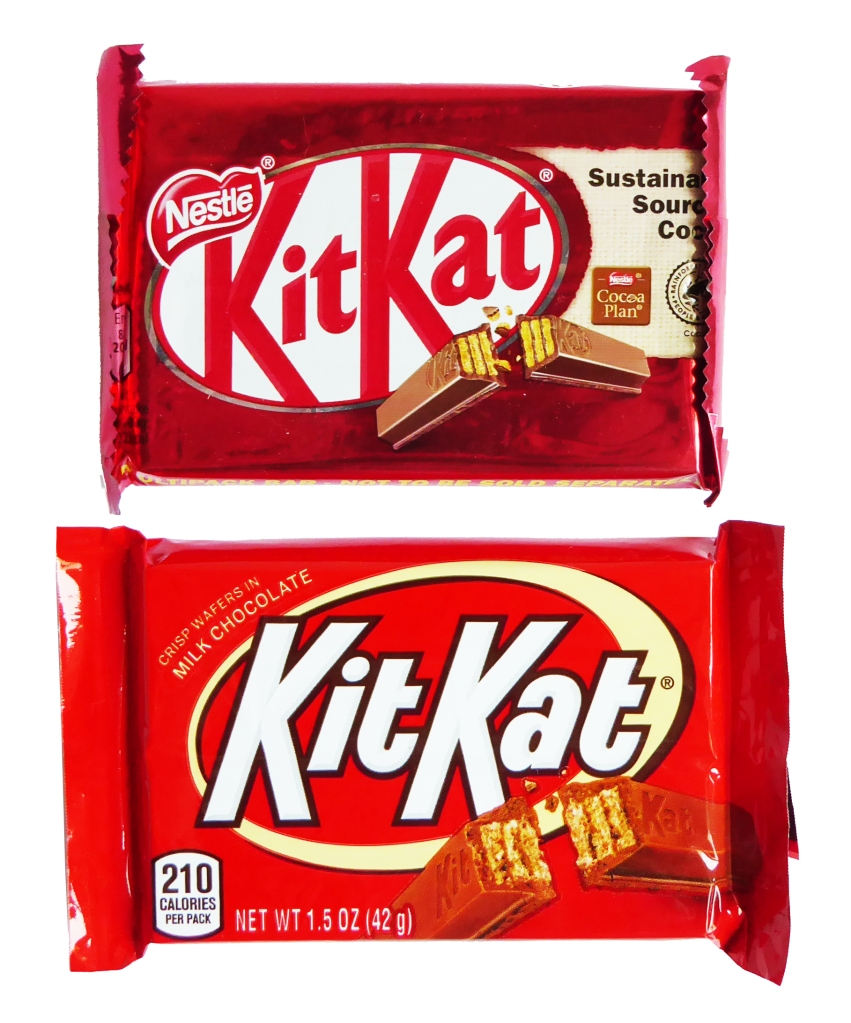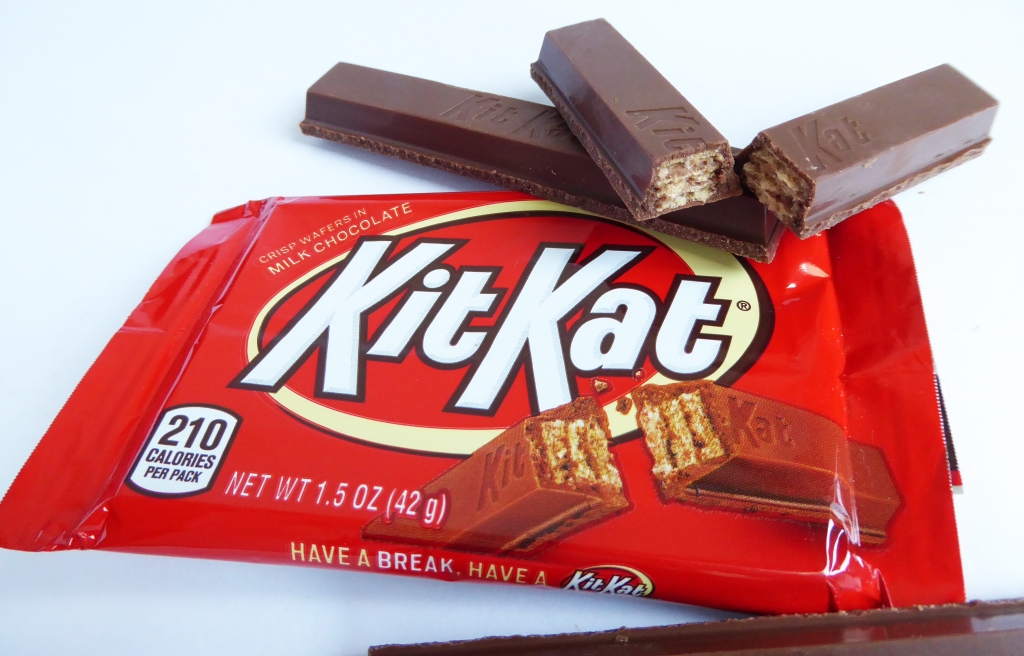Ding ding ding! We’ve had ‘Rolo’s, and we’ve had Cadbury ‘Mini Eggs‘…now it’s time for Kit Kat vs. Kit Kat – who does it best? Britain or America? Well, let’s find out…

Like with many European-made chocolates, here in the United States Hershey seems to have the monopoly on licencing rights. The Hershey Company produces American-made ‘Rolo‘ (originally made by British ‘Toffee King’ Macintosh in 1937, now produced by Swiss-based Nestlé) and all American-made Cadbury products, including the Easter staple ‘Mini Eggs‘ – both of which I have reviewed side-by-side.
In 1970 Hershey bought the rights to produce the Rowntree ‘Kit Kat‘ (which originated in 1935) for the American market. So lets see how they stack up!
Aesthetics; both wrappers are very similar. Use of red as the main colour (as it always has been, aside from during WWII when British ‘Kit Kat’ wrappers turned blue) similar font, encircled logo and an image of the wafer finger snapped in half. Both even use the memorable tagline ‘Have a break, have a Kit Kat‘ – which was first used in 1957.
Even unwrapped, apart from the British version using the ever cool hashtag motif, the four-fingered chocolate wafers look very similar. The biggest difference is that on the British chocolate the imprinted logo is closed in ‘brackets’, and the US one is not.
The chocolate colour is a little darker on the European bar…but Hershey have produced a pretty slick copy.

Where they begin to differ is in the taste!
As I find with most Hershey chocolate products, the initial taste is fairly yummy…but then an ashy taste begins to form in the back of my throat. The cocoa isn’t as chocolatey as Nestle’s Kit Kat, and I don’t feel like the thin, layered wafers have the same snappy crunch.
The British Kit Kat has a noticably sweeter taste over all when eaten next to the US version, and the slightly malty taste of the wafers is much more distinguishable. Hershey’s Kit Kat is more dense, with a heavier mouth feel, but is still provides a good crunch.

Sigh…once again I find myself preferring the chocolate I grew up with. A two-fingered Kit Kat in my packed lunch at school has perhaps screwed my preferences…and that’s ok. My American husband prefers the American Kit Kat all for the same reasons.
Does anyone out there prefer the ‘foreign’ version of a homeland candy? Are you a Brit who prefers Australian Caramilk? Or are you an American who prefers the Nestlé Kit Kat or Rolo?
It looks like I’ll be sticking with the British versions…unless someone can persuade me otherwise!


